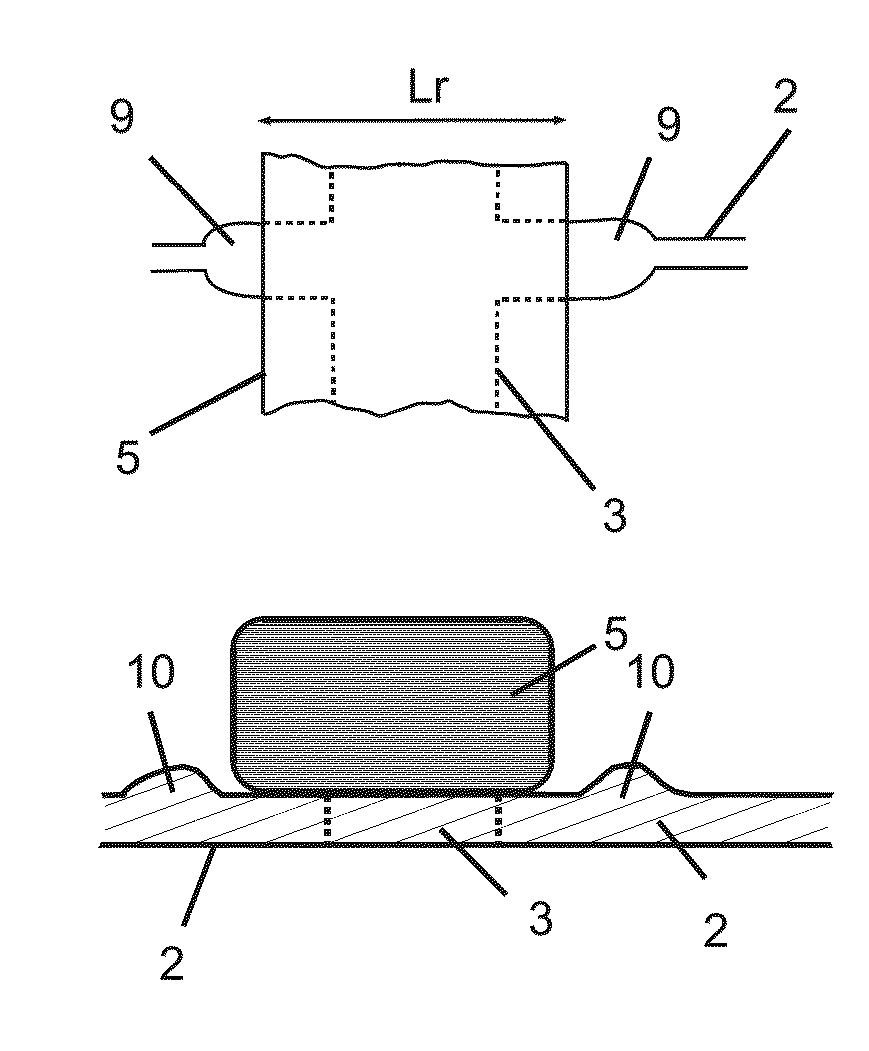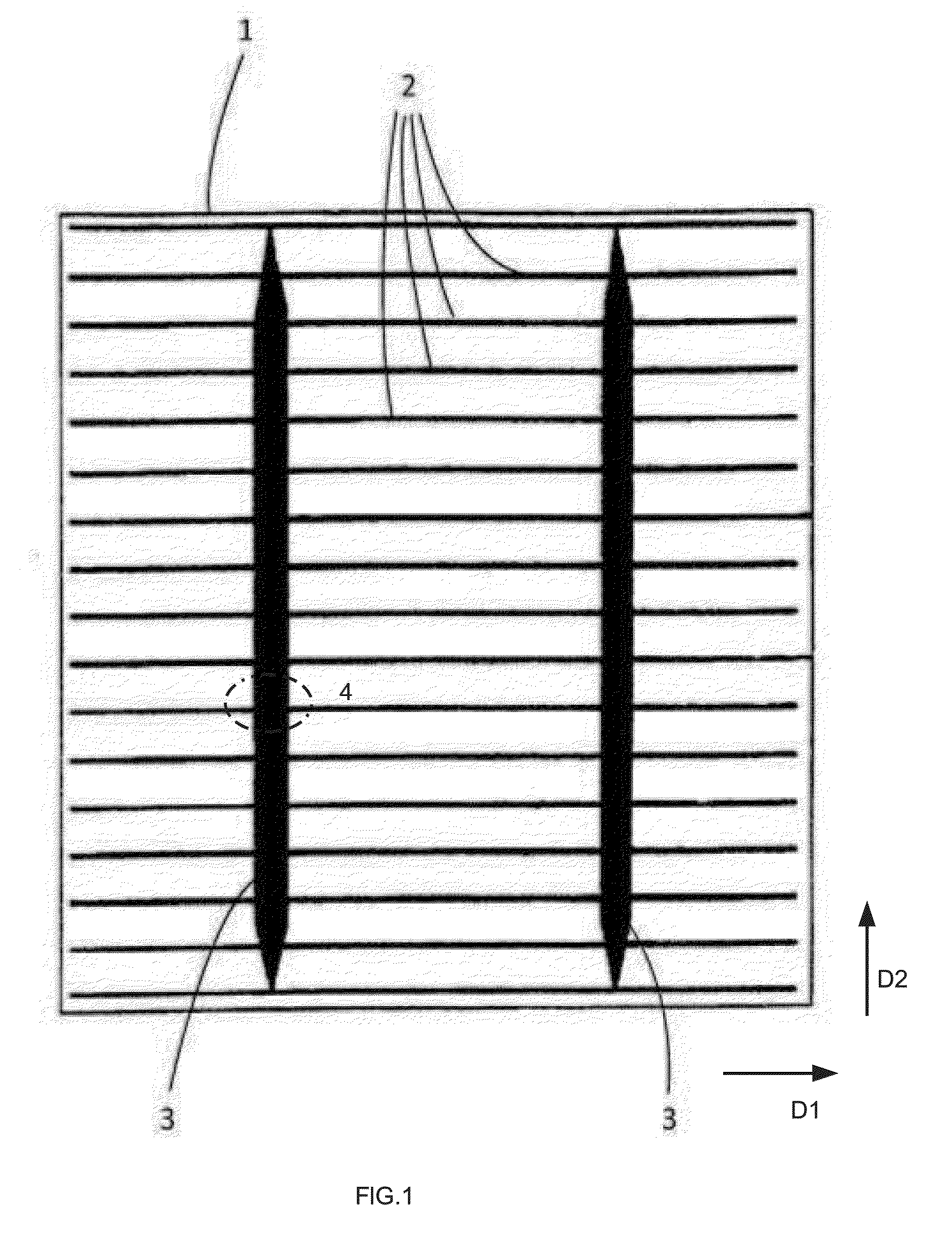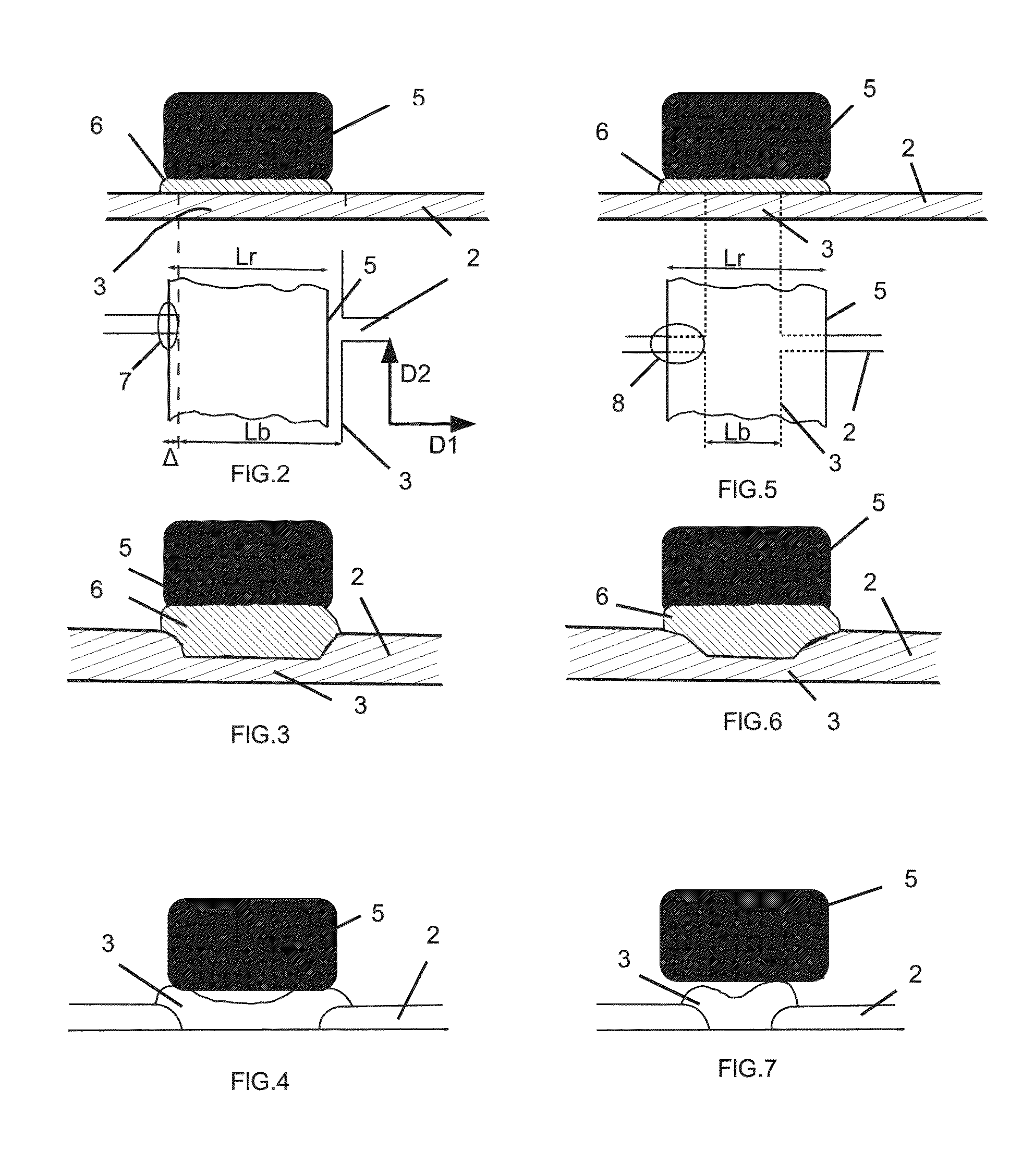Photovoltaic module with photovoltaic cells having local widening of the bus
a photovoltaic module and photovoltaic module technology, applied in the field of photovoltaic modules, can solve the problems of degrading the performance of the modules, affecting the reliability of the photovoltaic module, and the collection fingers are even more fragile, so as to improve the reliability of the photovoltaic cell and/or the photovoltaic module, and facilitate the manufacture of the photovoltaic module. , the effect of reducing the number of fingers
- Summary
- Abstract
- Description
- Claims
- Application Information
AI Technical Summary
Benefits of technology
Problems solved by technology
Method used
Image
Examples
Embodiment Construction
[0033]With reference to FIGS. 8 to 13, a photovoltaic cell comprises electrically conductive metallisations, for example based on silver, on a front side of a substrate wafer 1 made of a semiconductor, generally silicon. The metallisations could also be based on copper and especially silver-coated copper. The references defined in the description of FIGS. 1 to 7 have been preserved for identical elements. Collecting fingers 2, in particular continuous collecting fingers 2, are formed parallel to one another, in the first elongation direction D1. Their width “Wd” is considered perpendicularly to their elongation direction D1 and their width “Wd” is, in particular, substantially constant along the first elongation direction D1. Their function is to collect the electrons created by light in the silicon of the substrate 1.
[0034]The front side of the substrate 1 also comprises at least one bus 3, even a plurality of such buses 3 parallel to one another, each bus being oriented in the sec...
PUM
 Login to View More
Login to View More Abstract
Description
Claims
Application Information
 Login to View More
Login to View More - R&D
- Intellectual Property
- Life Sciences
- Materials
- Tech Scout
- Unparalleled Data Quality
- Higher Quality Content
- 60% Fewer Hallucinations
Browse by: Latest US Patents, China's latest patents, Technical Efficacy Thesaurus, Application Domain, Technology Topic, Popular Technical Reports.
© 2025 PatSnap. All rights reserved.Legal|Privacy policy|Modern Slavery Act Transparency Statement|Sitemap|About US| Contact US: help@patsnap.com



